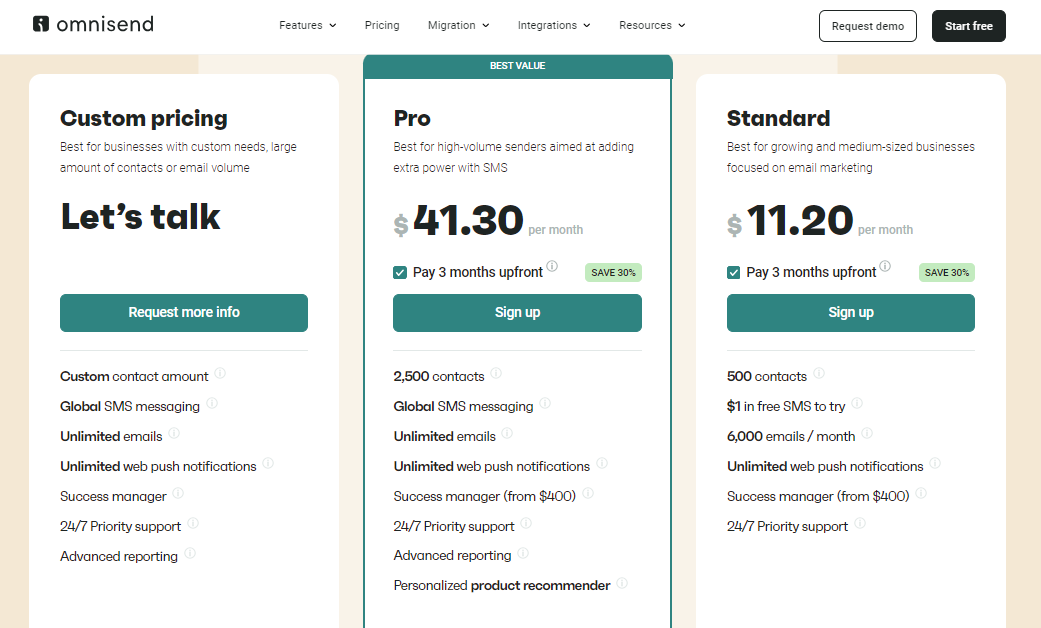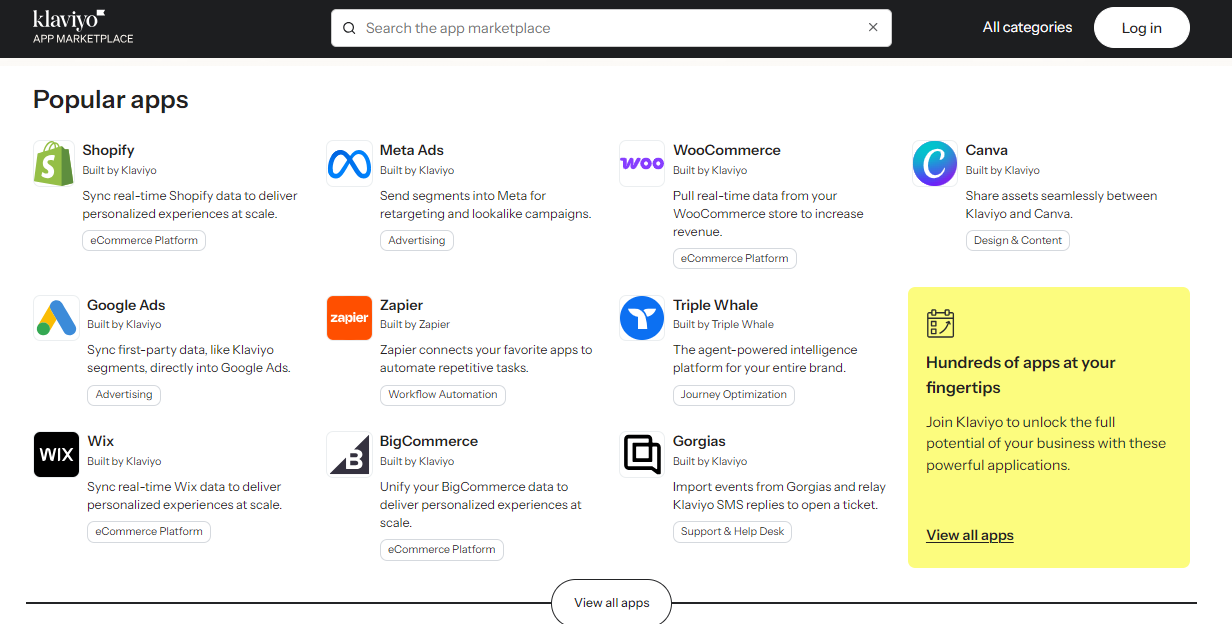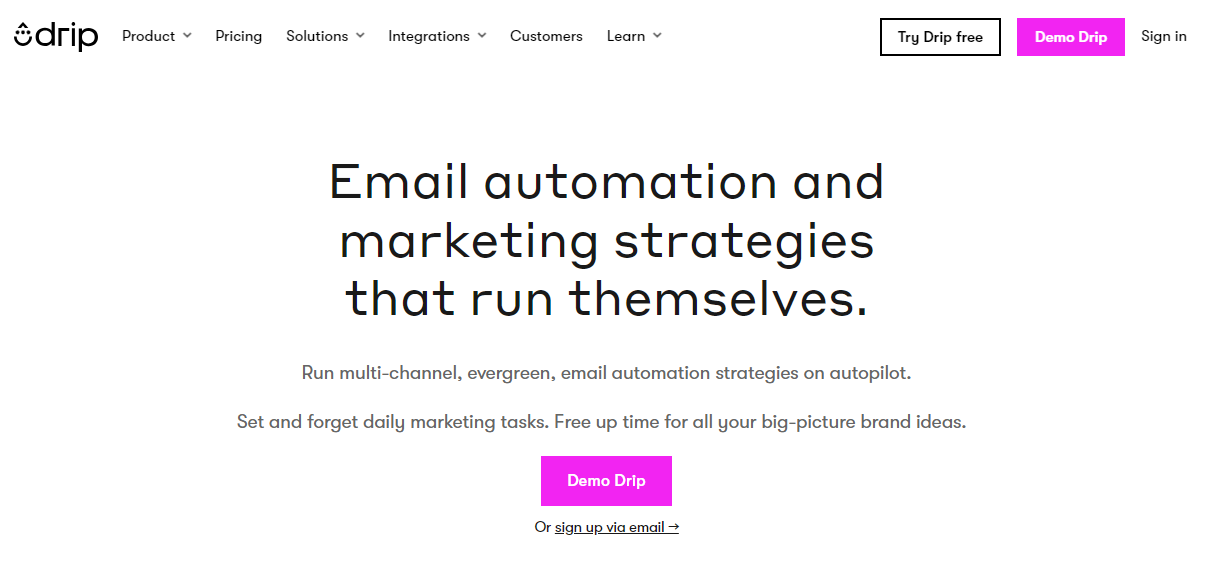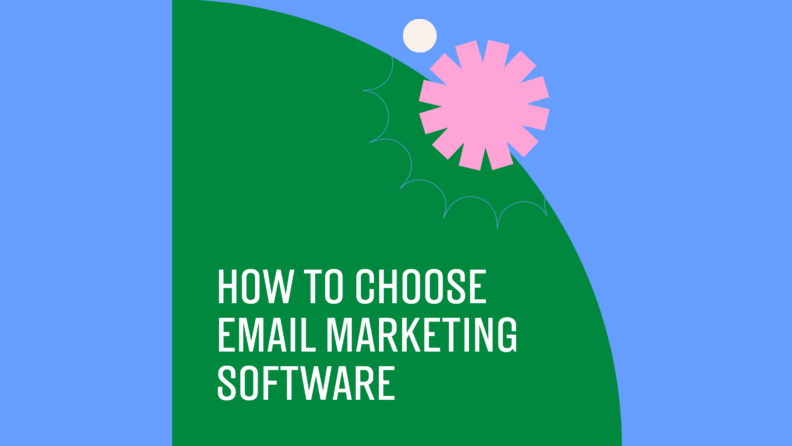Choosing the right email marketing software can save your team hours each week, improve accuracy, boost ROI, and make compliance almost effortless. Pick the wrong tool, though, and the consequences add up fast: wasted budget, missed opportunities, and mounting frustration. No one wants to be locked into software that can’t meet their needs or keep pace with their growth.
This guide is designed for marketing leaders who want to make confident, data-driven choices. Whether you’re leading a nimble team or a large department, you’ll find practical insights to help you select a platform that scales with your needs.
9 Things to Look for When Choosing Email Marketing Software
To evaluate email marketing software effectively, focus on key factors that align with your team's goals and challenges. Consider these elements to ensure the tool meets your needs:
1. Plan Flexibility

Plan flexibility is about adjusting your subscription as your needs change. It's important because your team may grow or shrink, and your tool should adapt without hassle. Look for providers that offer easy upgrades or downgrades. During a demo, ask about the process for changing plans and any associated costs.
2. Data Access and Reporting

You'll need detailed insights into your campaigns to make informed decisions. Data access and reporting features should provide clear, actionable metrics. Avoid tools that hide data behind paywalls or complex interfaces. Test the reporting tools during a trial to see if they meet your analytic needs.
3. Integration with Your Tech Stack

Your email marketing software should work seamlessly with your existing tools. Integration ensures data flows smoothly between platforms, saving time and reducing errors. Check if the software integrates with your CRM, analytics, and other key tools. Ask for a list of supported integrations before deciding.
4. Onboarding and Support
A smooth onboarding process and reliable support can make a big difference. You'll want a provider that offers comprehensive training and responsive customer service. During a trial, evaluate how easy it is to get started and how quickly support responds to inquiries.
5. Role-Based Permissions
This feature lets you control who can access and modify different parts of the software. It's important for maintaining security and accountability. Ensure the software allows you to set permissions based on roles or teams. Test this feature by setting up different user roles during a demo.
6. Industry-Specific Compliance
Compliance with industry standards is essential to avoid legal issues. Make sure the software supports regulations relevant to your industry, like GDPR or CAN-SPAM. Ask the provider for documentation or certifications that prove compliance.
7. Customization Options
Customization lets your team tailor the software to fit specific needs. It matters because no two teams are the same, and flexibility can boost efficiency. Look for tools that allow you to customize templates, workflows, and dashboards. During a demo, explore how easy it is to make these changes.
8. Automation Features

Automation saves time by handling repetitive tasks, allowing your team to focus on strategy. Ensure the software offers robust automation capabilities, like scheduling, segmentation, and trigger-based actions. Test these features by setting up a simple automated campaign during a trial.
9. Mobile or Multi-Location Support
If your team works remotely or across multiple locations, mobile support is key. It ensures your team can access the software from anywhere, anytime. Look for tools with strong mobile apps or responsive web interfaces. During a trial, test the software on different devices to ensure it meets your needs.
How to Choose Email Marketing Software: A 5-Step Framework
To select the right email marketing software, focus on aligning the tool with your team's specific goals and challenges. It's about finding a solution that fits seamlessly into your workflow and enhances productivity. Here's a step-by-step guide to help you make the right choice:
Step 1: Identify Your Needs
Start by defining your team's needs to guide your search for the perfect email marketing software. Focus on gathering insights, prioritizing issues, and aligning requirements with your organization's goals:
Gather Stakeholder Input
Engage with key stakeholders like marketing, IT, and leadership to understand their needs. Host meetings or send surveys to collect feedback on current challenges. This collaborative approach ensures you consider diverse perspectives, helping you choose a tool that benefits everyone.
List and Prioritize Pain Points
Identify and rank the issues your team faces with the current system. Common pain points might include limited automation, poor integration, or lack of reporting features. Prioritize these based on impact and frequency to focus on solutions that will make the biggest difference.
Align with Internal Policies
Match your requirements with your organization's policies and goals. Consider vendor preferences, security protocols, and regulatory requirements like GDPR or CAN-SPAM. This alignment ensures compliance and smooth integration with existing processes.
Differentiate Must-Haves vs. Nice-to-Haves
Separate essential features from those that are simply desirable. Must-haves might include automation and integration, while nice-to-haves could be advanced analytics or customization. This distinction helps you focus on solutions that meet your core needs.
Ask These Questions:
- What complaints or blockers come up most often?
- What needs aren’t being met today?
- What features would solve your top 3 pain points?
- What ROI are you expecting from this investment?
- Are there security or compliance requirements to consider?
Step 2: Research Email Marketing Software Vendors
Researching and comparing vendors is the next step in selecting email marketing software. Focus on vendor scans, tool comparisons, and identifying key differentiators:
High-Level Vendor Scans
Start with a broad scan of vendors by reviewing rankings, user reviews, and case studies. This gives you an overview of what's available and how each tool performs in real-world scenarios. Look for patterns in feedback to spot consistent strengths or weaknesses.
Compare Based on Needs
Evaluate tools based on your business size and technical needs. Consider whether you want a solution that integrates well with existing systems or one that offers comprehensive outsourcing. This comparison helps narrow down options to those that fit your specific requirements.
Identify Key Differentiators
Look for features that set vendors apart, such as strong implementation support, user-friendly interfaces, or flexibility for niche cases. These differentiators can make a significant impact on your team's experience. List these features to guide your decision-making process.
Document Your Findings
Keep detailed notes on each vendor's strengths and weaknesses. Use bullet points to capture key insights and ensure nothing is overlooked. This documentation helps you make informed comparisons and supports discussions with stakeholders.
Ask These Questions:
- What does each tool do best?
- Does it fit your team size, budget, and stack?
- What support and documentation are available?
- How easy is the implementation process?
- Are there any unique features that stand out?
Top Email Marketing Software to Consider
Here’s my list of the top 10 email marketing software options available, to help you get started in your search:
Step 3: Make an Email Marketing Software Shortlist and Reach Out
Narrow your options to a few vendors and start conversations to find the best fit. Focus on shortlisting, gathering information, booking demos, and using consistent criteria:
Shortlist Vendors
Based on your research, select 2-4 vendors that best meet your needs. Consider factors like features, pricing, and user feedback. This shortlist helps you focus your efforts and manage the evaluation process efficiently.
Send RFI or RFP
Send a Request for Information (RFI) or email marketing software RFP to gather detailed insights. This step helps you understand each vendor's offerings and capabilities. Tailor your requests to focus on specific needs and challenges your team faces.
Book Demos
Schedule demos with shortlisted vendors and prepare focused questions. Use this time to see the software in action and address any concerns. Pay attention to how the tool handles your specific use cases and scenarios.
Use Consistent Criteria
Evaluate each vendor using the same set of criteria. This consistency ensures a fair comparison and helps you make objective decisions. Include factors like user experience, support, and cost in your evaluation checklist.
Ask These Questions:
- Can you walk me through a real customer story like ours?
- What support or onboarding resources do you offer?
- What features require an upgrade?
- How does your tool integrate with our existing systems?
- What unique advantages does your software provide?
Step 4: Build the Business Case
Turn your vendor research into a compelling business case to gain leadership support. Focus on summarizing value, estimating costs, and articulating ROI:
Summarize Value
Clearly outline the pain points your team faces and the outcomes you expect from the new software. This summary helps demonstrate the value of the investment. Use bullet points to highlight key issues and how the software addresses them.
Estimate Costs and Timelines
Gather basic cost estimates and implementation timelines from vendors. Present these details clearly to your leadership team. Consider including email marketing software pricing comparisons and expected deployment schedules.
Articulate ROI and Risks
Explain the potential ROI and efficiency gains, as well as the risks of doing nothing. Highlight how the software could improve productivity or reduce errors. Use real-world examples to illustrate the financial and operational benefits.
Ask These Questions:
- What business problem will this solve?
- What are the risks of doing nothing?
- What are the financial and operational upsides?
- How soon can we expect to see results?
- What resources will we need for implementation?
Step 5: Implement Your Email Marketing Software and Onboard Your Users
Plan a smooth onboarding process to ensure your team adopts the new email marketing software effectively. Focus on clear communication, assigning roles, training, and feedback loops:
Communicate the Rollout Plan
Clearly communicate the rollout plan to all users, ensuring everyone knows what to expect. Use emails, meetings, or internal newsletters to share timelines and key dates. Keep the message simple and focus on how the software will benefit the team.
Assign Internal Owners
Designate internal owners and points of contact for the implementation process. These individuals will manage the rollout and serve as liaisons with the vendor. Assign roles based on expertise and availability to ensure smooth coordination.
Ensure Consistent Training
Make sure your team completes training and adopts the tool consistently. Schedule training sessions and provide access to vendor resources like tutorials or webinars. Encourage users to practice with the software to build confidence and proficiency.
Create Feedback Loops
Establish feedback loops to gather user input during the rollout. Use surveys or regular check-ins to address concerns and adjust the process as needed. Collaborate with the vendor for additional support or resources if challenges arise.
Ask These Questions:
- What’s the change management plan?
- Who’s responsible for the rollout?
- How will you track early success?
- What training resources are available?
- How will you gather user feedback?
What’s Next:
If you're in the process of researching email marketing software, connect with a SoftwareSelect advisor for free recommendations.
You fill out a form and have a quick chat where they get into the specifics of your needs. Then you'll get a shortlist of software to review. They'll even support you through the entire buying process, including price negotiations.


